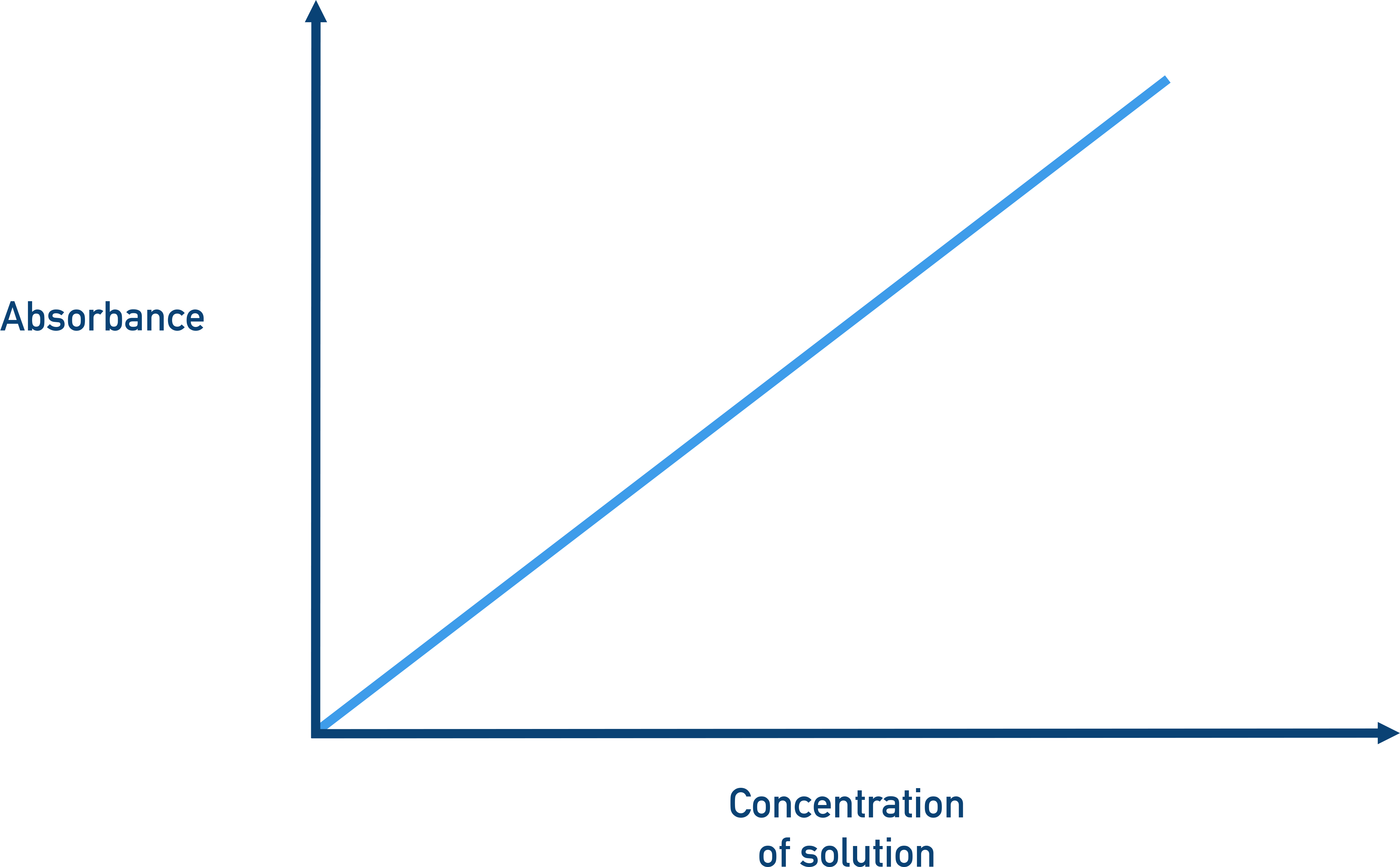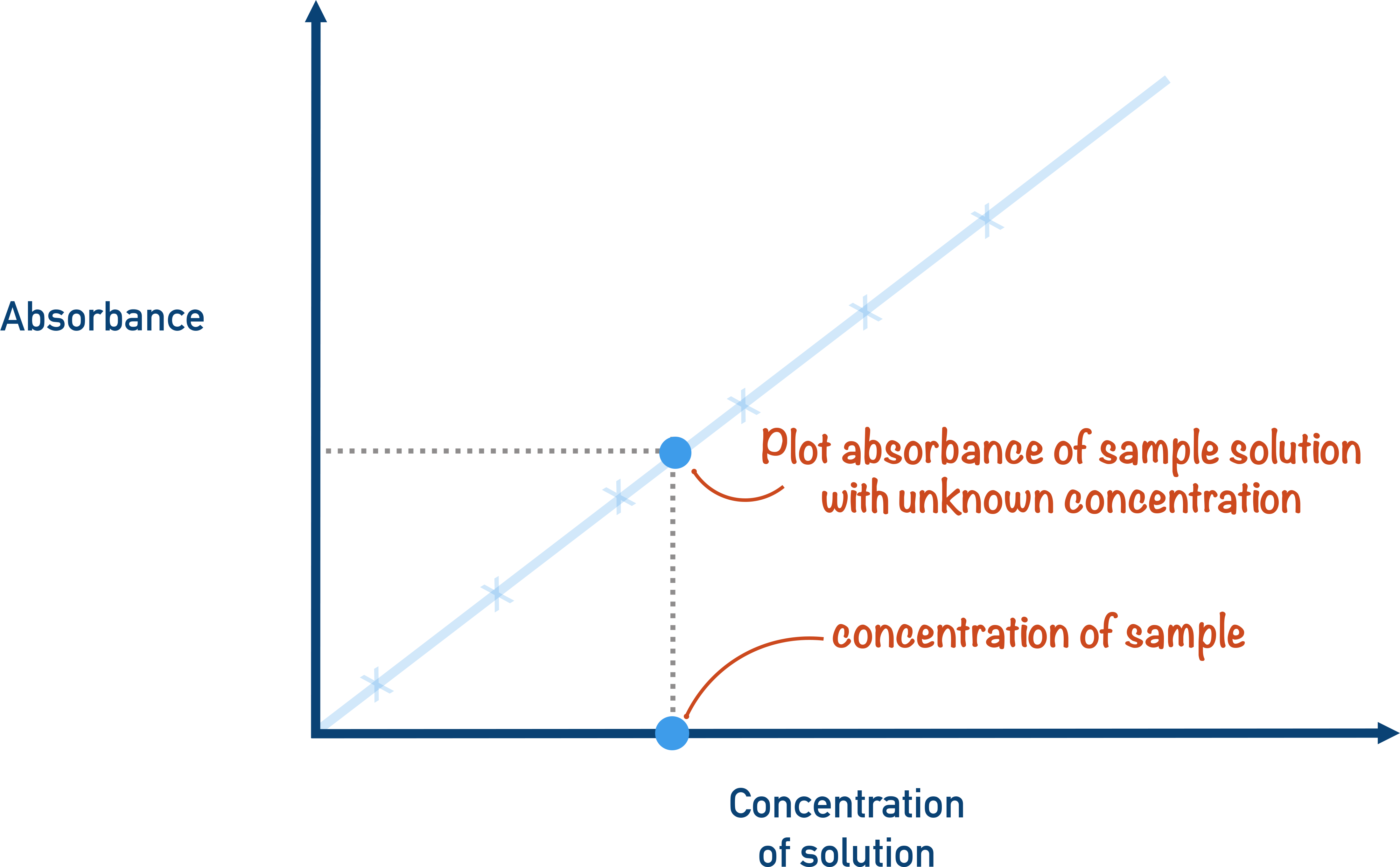Beer-Lambert Law
Quick Notes
- The Beer-Lambert Law links absorbance of light to the concentration of a substance in solution.
- Equation: A = εbc
- A = absorbance (unitless),
- ε = molar absorptivity (L·mol-1·cm-1)
- b = path length (cm)
- c = concentration (mol/L)
- Absorbance increases with:
- Higher concentration (more particles absorbing light)
- Longer path length (more solution for light to pass through)
- In most cases, ε and b are constant, so absorbance is directly proportional to concentration.
- A spectrophotometer measures absorbance at a chosen wavelength (usually maximum absorbance, λmax).
Full Notes
The Beer-Lambert Law is used to relate the amount of light absorbed by a solution to its concentration. This is a fundamental concept in analytical chemistry, especially in spectrophotometry.
The Equation

A = εbc
Where:
- A = Absorbance (no units)
- ε = Molar absorptivity (L·mol-1·cm-1) – a constant that depends on the substance and the wavelength of light used
- b = Path length (in cm) – the width of the cuvette or container holding the solution
- c = Concentration of the absorbing species (mol/L)
This equation tells us that absorbance is directly proportional to both the concentration of the solute and the path length the light travels through.
What Is Molar Absorptivity (ε)?
Molar absorptivity (also called molar extinction coefficient) is a constant that indicates how strongly a chemical species absorbs light at a particular wavelength. It depends on both the chemical composition of the solute and the wavelength chosen for measurement.
A colorimeter measures how much light passes through a solution.
The more light that is transmitted, the less light that has been absorbed by the sample.
In other words, light absorption and transmission are inversely related – as absorption increases, transmission decreases.

A higher ε means the species absorbs more light at that wavelength.
Spectrophotometers are typically set to the wavelength of maximum absorbance (λmax) for a given substance, to give the most accurate readings.
Practical Use
In most laboratory settings:
- The path length b is fixed (usually 1.00 cm).
- The spectrophotometer is typically set to the wavelength of maximum absorbance (optimum wavelength) for the species being analyzed to ensure the maximum sensitivity of measurement.
A ∝ c
This means absorbance is directly proportional to concentration. A plot of absorbance vs. concentration should give a straight line.

Absorbance against concentration graphs can be used to determine unknown concentrations by plotting the absorption of a sample solution on the graph and finding the corresponding concentration.

Worked Example
Question: A solution has an absorbance of 0.650 at 520 nm. The cuvette has a path length of 1.00 cm, and the molar absorptivity at this wavelength is 1.30 × 104 L·mol-1·cm-1. What is the concentration of the solution?
- Step 1: Use A = εbc
0.650 = (1.30 × 104) × (1.00) × c - Step 2: Solve for c
c = 0.650 ÷ (1.30 × 104) = 5.00 × 10-5 mol/L
Answer: 5.00 × 10-5 mol/L

If a spectrophotometry question gives you a graph of absorbance vs. concentration, check whether the relationship is linear. If it is, you can use the slope to solve for unknown concentrations using a calibration curve.
Summary
- The Beer-Lambert Law provides a mathematical relationship between the amount of light absorbed by a solution and the concentration of solute:
- A = εbc
- This allows chemists to determine concentrations accurately using spectrophotometry.
- By selecting the appropriate wavelength and using a consistent path length, absorbance readings become a reliable measure of concentration in both lab and industrial applications.
